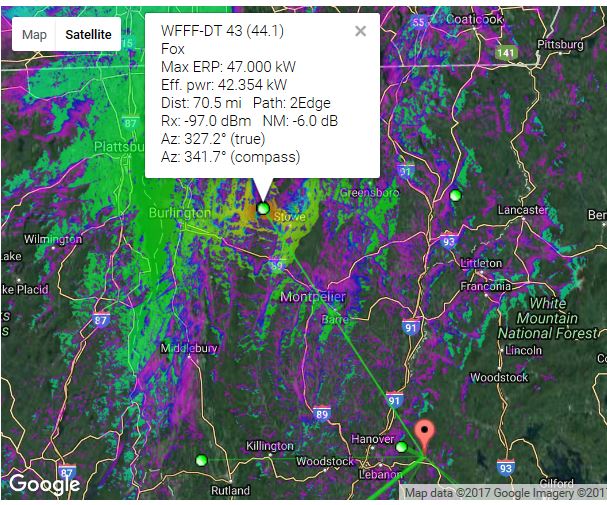The signal path for WFFF is very similar to the WCAX signal path, but WFFF is running much less power and its antenna is a little lower on a separate tower.


You are on the extreme fringe of coverage for WFFF

A closeup of WFFF coverage; purple is very weak, no color is dead zone

Quote:
|
1) Given that reception lasted for 20+ hours could this have been a "tropospheric" reception phenomenon?
|
Yes, very possible. You can track changes in tropospheric events here:
http://www.dxinfocentre.com/tropo.html
Other local changes in atmospheric conditions can also affect reception of WFFF.
Quote:
|
I vertically stacked two SolidSignal HDB8x's,
|
An 8-bay antenna has a horizontal beamwidth that is more narrow than a 4-bay, but its vertical beamwidth is the same as the 4-bay.
When you have a vertical stack of two 8-bays, the vertical beamwidth is even more narrow than one 8-bay. This means the azimuth aim AND the elevation aim are very critical. It might be necessary to tilt the top of the antenna back to aim slightly above horizontal for peak signal.
One of my antenna test locations has a clear path across water, but I found it necessary to tilt my 4-bay for max signal.
